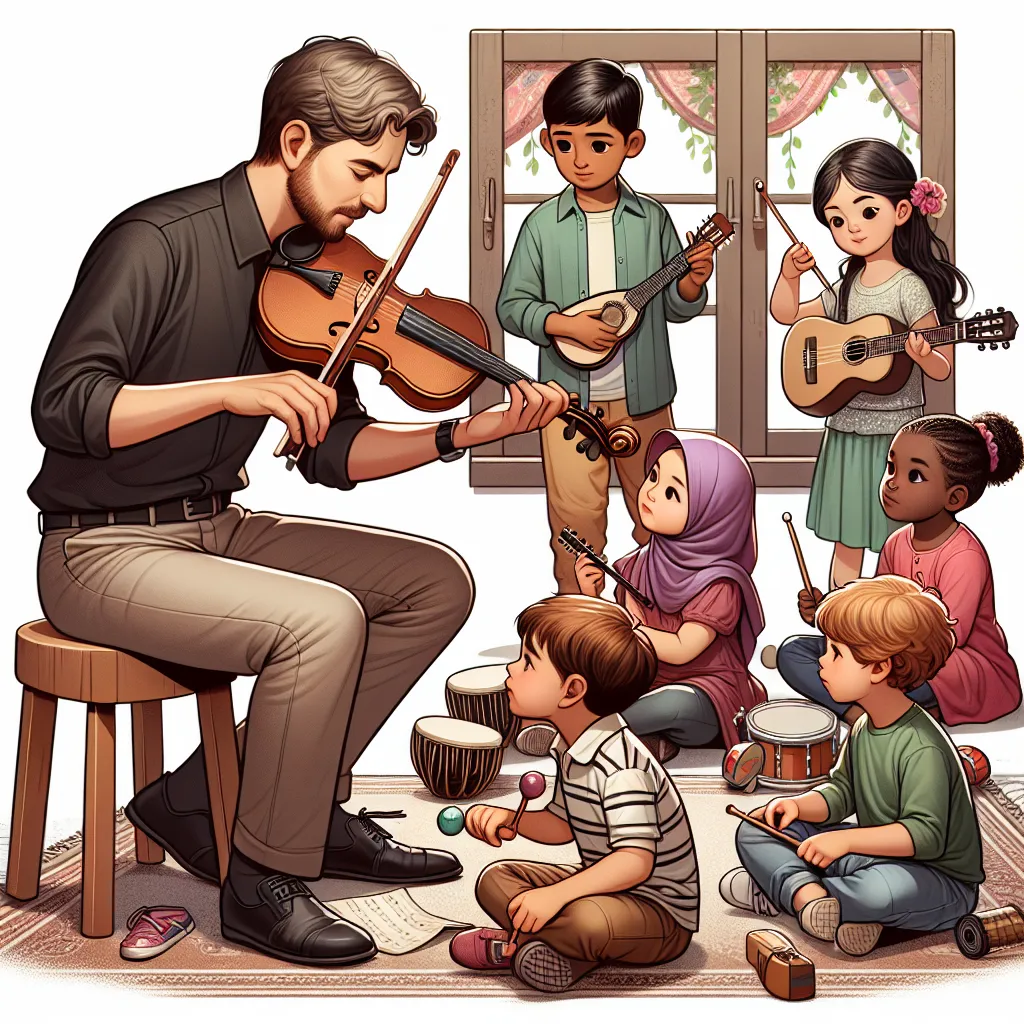Ask AI on The Internet
Question: GRL1501/ASSESSMENT 3/0/2024 5 QUESTION 1 (5) 1. Below is a list of statements. In each instance, indicate whether the statement is true (T) or false (F). Statement T/F a) The Grade R daily program should allow for flexibility and spontaneity. T b) Inventiveness is about encouraging young children to express themselves and take risks in creating art. T c) The first phase of scribbling is known as controlled scribbles. F d) The experience of making decisions and choices when creating a piece of art carries over into other aspects of life. T e) It is during the scribble stage that children begin to experience a feeling of artistic satisfaction. F QUESTION 2 (10) 2. Fill in the missing word in each of the following sentences. 2.1 __________ is a composition that consists of various materials like newspaper cuttings, cardboard, photos, etc. (2) 2.2 Colours ranging from yellow to red violet are known as the _______ colours. (2) 2.3 Many of the motions involved in making art, such as holding a paintbrush or scribbling with a crayon, are essential to the growth of _______ skills. (2) 2.4 Creative activities help children to develop attention skills and _______. (2) 2.5 ________ does not only involve a pen and paper but also allows children to explore new media and materials. (2) QUESTION 3 (37) 3.1 Briefly discuss the importance of teaching art to young children. (4 X2) (8) 3.2 Read the statement below and answer the question that follows. Teachers and practitioners working with young children can promote children’s mark making and encourage them to express themselves in this creative manner.GRL1501/ASSESSMENT 3/0/2024 6 As a Grade R teacher, briefly discuss three ways in which you can encourage young children to make marks. (3 X 2) (6) 3.3 Draw two shapes to show the difference between a two-dimensional and a three-dimensional shape. (4) 3.4 Read the excerpt below and answer the question that follows. Through the use of koki pens, colouring crayons, scissors and paintbrushes young children develop eye-hand coordination. The perfection of hand control helps children to acquire the skill to manoeuvre and to produce a myriad of hand skills. Design one activity to help Grade R children develop the control of hands (5) and one activity to develop eye-hand coordination (5). (10) 3.5 Analyse the picture below and determine the stage of artistic development that is depicted. (1) https://shaping.banyule.vic.gov.au/Kids/activity-three/ 3.6 Briefly discuss the characteristics of the stage alluded to in 3.5 and how children choose colours during that stage. (8) QUESTION 4 (37) 4.1 Examine the Grade R daily programme in the study guide and develop two teacher-guided activities that you can plan for art under the theme of weather. (6) 4.2 Draw a basic classroom layout showing interest areas for activities such as block play, art, and pretend play. (7)GRL1501/ASSESSMENT 3/0/2024 7 4.3 Read the statement below and answer the question that follows. The study guide outlines the basic principles of chid development. These principles inform how we teach young children using an approach known as developmentally appropriate practice. In view of the statement, draw a table with two columns and, in the first column, write down five principles of child development (5). In the second column, evaluate the importance of each principle (10). Below is an example of the table. (15) Principle Importance of each principle 1 2 3 …. Continue until 5 4.4 Recommend two art activities to support the social development of Grade R learners. (2 X 3) (6) 4.5 Define the term “developmentally appropriate practice”. (2) QUESTION 5 (12) 5.1 Evaluate the importance of each of the following three roles of a teacher during art lessons. (4 X 3) (12) Teacher’s role Importance of the role (mention two points) 1 Observer 2 Assessor 3 Recorder
### QUESTION 1 **(5 marks total)** Indicate whether the statement is true (T) or false (F): a) **The Grade R daily program should allow for flexibility and spontaneity.** *True (T)* b) **Inventiveness is about encouraging young children to express themselves and take risks in creating art.** *True (T)* c) **The first phase of scribbling is known as controlled scribbles.** *False (F)* d) **The experience of making decisions and choices when creating a piece of art carries over into other aspects of life.** *True (T)* e) **It is during the scribble stage that children begin to experience a feeling of artistic satisfaction.** *False (F)* ### QUESTION 2 **(10 marks total)** Fill in the missing word in each of the following sentences: 2.1 **Collage** is a composition that consists of various materials like newspaper cuttings, cardboard, photos, etc. *(2 marks)* 2.2 Colours ranging from yellow to red-violet are known as the **warm** colours. *(2 marks)* 2.3 Many of the motions involved in making art, such as holding a paintbrush or scribbling with a crayon, are essential to the growth of **fine motor** skills. *(2 marks)* 2.4 Creative activities help children to develop attention skills and **perseverance**. *(2 marks)* 2.5 **Drawing** does not only involve a pen and paper but also allows children to explore new media and materials. *(2 marks)* ### QUESTION 3 **(37 marks total)** #### 3.1 Importance of teaching art to young children: *(8 marks)* 1. **Develops motor skills**: Children enhance their fine motor skills through activities such as drawing, cutting, and painting. 2. **Promotes creativity**: Engaging in art helps children express themselves creatively and foster their imagination. 3. **Supports cognitive development**: Art activities can help with problem-solving, decision-making, and critical thinking. 4. **Enhances emotional expression**: Art allows children to express their feelings and emotions in a constructive way. #### 3.2 Three ways to encourage young children to make marks: *(6 marks total)* 1. **Provide varied materials**: Offer various tools like crayons, markers, paints, and chalk to spark interest. 2. **Create a conducive environment**: Set up a dedicated art area where children feel free to explore and create without fear of making a mess. 3. **Model mark making**: Show examples of different marks and patterns and actively engage in marking activities alongside the children. #### 3.3 Draw two shapes: *(4 marks total)* 1. **Two-dimensional shape**: A **square** or **circle**. 2. **Three-dimensional shape**: A **cube** or **sphere**. (Use simple sketches to illustrate the difference, keeping one flat and the other showing depth.) #### 3.4 Activities to develop control of hands and eye-hand coordination: *(10 marks total)* **Control of hands**: - **Activity**: Playdough manipulation. - **Details**: Children can roll, pinch, and shape playdough to develop fine motor control. **Eye-hand coordination**: - **Activity**: Threading beads. - **Details**: Using various small beads and thread, children improve their coordination by threading the beads onto a string. #### 3.5 Stage of artistic development: *(1 mark)* The stage of artistic development that is depicted in the provided link is the **Preschematic Stage** (around 4-7 years old). #### 3.6 Characteristics of the Preschematic Stage: *(8 marks total)* - **Emerging human figures**: Children begin to draw recognizable human figures that often lack detail but show the basic form. - **Symbolic use of color**: Children may use colors based on their emotional or symbolic significance rather than realism. - **Simple representation**: Objects and people are drawn simply and may appear floating on the page as no understanding of spatial relationship is seen. ### QUESTION 4 **(37 marks total)** #### 4.1 Teacher-guided activities for the theme of weather: *(6 marks total)* **1. Create a weather chart**: - **Details**: Children use different materials (e.g., cotton for clouds, blue paint for rain) to create a chart depicting various weather conditions. **2. Sun craft**: - **Details**: Children make sun shapes using yellow paper and paint, and attach rays made from strips of paper. #### 4.2 Basic classroom layout: *(7 marks total)* - **Art Area**: Equipped with various art supplies. - **Block Play Area**: With different blocks for construction. - **Pretend Play Area**: With costumes, kitchen sets, and various props. (Provide a simple sketch mapping these areas.) #### 4.3 Principles of child development and their importance: *(15 marks total)* | **Principle** | **Importance of each principle** | |----------------------------------------|--------------------------------------------------------------------------------------------------------------------------| | 1. Development follows a predictable sequence | Helps to create age-appropriate activities that align with the child’s stage of development. | | 2. Each child is unique | Teachers can provide personalized learning experiences that cater to individual needs and interests. | | 3. Development is integrated | Activities should address multiple developmental areas (cognitive, emotional, social, physical) simultaneously. | | 4. Children learn through play | Ensures learning experiences are engaging and effective by incorporating elements of play. | | 5. Relationships are paramount | Strong relationships with caregivers and educators provide the secure base for learning and development. | #### 4.4 Art activities to support social development: *(6 marks total)* **1. Group mural painting**: - **Details**: Encourage children to collaboratively work on a large mural, fostering teamwork and communication. **2. Role-playing with costumes**: - **Details**: Use dress-up activities where children can act out different social roles, promoting interaction and social skills. #### 4.5 Define “developmentally appropriate practice”: *(2 marks)* Developmentally appropriate practice refers to educational methods and teaching strategies that consider the developmental stages and individual needs of children to provide optimal learning and growth opportunities. ### QUESTION 5 **(12 marks total)** Evaluate the importance of each of the following three roles of a teacher during art lessons: | **Role** | **Importance (mention two points)** | |---------------|-------------------------------------------------------------------------------------------------------------------------------------------------------------| | **Observer** | 1. Allows teachers to identify individual strengths and areas for growth. <br> 2. Helps in understanding child development and planning future activities. | | **Assessor** | 1. Provides insight into children's progress and skill development. <br> 2. Enables the teacher to offer targeted support and adjust instruction accordingly. | | **Recorder** | 1. Documentation of children's work serves as a record of their developmental milestones. <br> 2. Helps in communicating progress with parents and other educators. | *(4 marks each for Observer, Assessor, and Recorder roles)*
Think your answer is better than the AI's? Post it below.
Question Tags
If you want your question answered by an AI, click here.







Post your own comment: